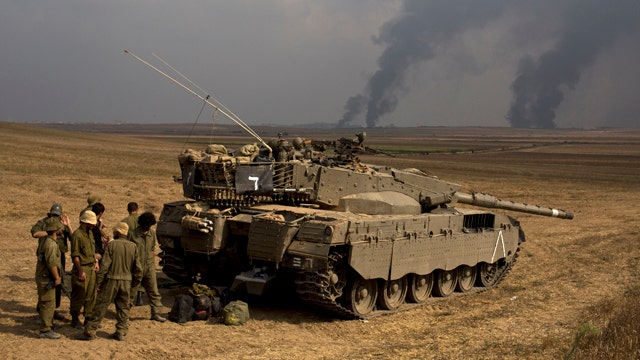Last October, the Israel Defense Forces (IDF) discovered what at the time was considered the mother of all Hamas tunnels. It extended underground for more than a mile and a half from Gaza to Kibbutz Ein Hashlosha, a farming community in Israel. People could stand upright when moving through the tunnel, and electricity lines provided lighting. It was the third Hamas tunnel crossing into Israel uncovered in 2013 alone; four months ago, another major one was revealed.
If Hamas had not initiated the massive rocket and missile attacks on Israel earlier this month, if it had accepted the cease-fire proposed last week before Israeli ground forces entered Gaza, the extent of the tunnel network might have remained concealed. Israeli forces so far have located another 23 tunnels, and they are continuing to search, in part because Hamas operatives tried to enter Israel through several of them, even as the rockets and missiles have continued to land over more than half of Israel, threatening millions of citizens. One rocket that landed near Ben-Gurion International Airport led to a temporary suspension of U.S. and European flights to Israel.
[pullquote]
Since Hamas violently wrested control of Gaza from the Fatah-led Palestinian Authority in 2007, barely two years after Israel had left the coastal territory, tunnel construction and the acquisition and manufacturing of rockets and missiles have topped the Hamas government agenda. There has been much focus in recent years in the media, including a National Geographic feature, on the hundreds of tunnels carved out under the Gaza-Egypt border.
Those tunnels provided a means of getting a variety of commodities, including food, fuel, cars, goats and, yes, weapons. And, they provided a vital revenue stream for Hamas, which taxed the tunnel operators. After Egypt's Muslim Brotherhood government was overthrown a year ago, General Abdel Fattah el-Sisi, now Egypt’s president, launched an aggressive crackdown on Hamas that has shut down most of the tunnels along Gaza's southern border.
But the tunnels to Israel are quite different and so much more dangerous. They have no commercial purpose, other than to be used to try to capture and kidnap an Israeli, like Gilad Shalit, the Israeli soldier held for more than five years and exchanged for over 1,000 Palestinian prisoners, or to commit mass terror akin to the suicide bombings and other terror attacks that are Hamas' stock-in-trade.
One wonders what Palestinians in Gaza might have achieved if engineering resources and manpower had not been diverted by the terrorist regime. Most Palestinians in Gaza should be downright angry about the unconscionable misappropriation and misuse of precious materials and people.
But, then, many in Gaza fear Hamas. The group, without protest, places weapons in schools, mosques and apartment buildings, and it routinely uses civilians as human shields to protect its arsenal. Rockets were found this week in two U.N.-run schools.
Palestinians in Gaza who might oppose Hamas are hostages to the terror organization, which seeks Israel's destruction, opposes any effort to achieve peace and strives to undermine its rival, Palestinian President Mahmoud Abbas. Last November, the Tamorod Gaza group – based on Tamorod in Egypt, which helped bring down President Morsi – called for mass protests against the Hamas government. But that initiative failed due to very serious Hamas threats.
As Secretary of State John Kerry, U.N. Secretary-General Ban Ki-moon and other world leaders, in cooperation with Egypt, strive now to find that elusive formula to end the current war, there needs to be once and for all broad recognition that eliminating the Hamas terror regime cannot be only Israel’s concern. Some – certainly those who embraced the Fatah-Hamas unity agreement announced in May – must accept that Hamas today is the same Hamas that failed to honor the 2012 cease-fire and instead resumed in earnest its tunnel construction and weapons acquisition projects.
At heart, Hamas is no different from the radical Islamist groups terrorizing Iraq and other countries in the region. They all use violence to intimidate and advance the goals of their twisted ideologies. Until those who empathize with and provide financial and material support to Hamas recognize that the group is the primary obstacle to peace and to Gaza residents bettering their own lives, there will be no quiet.
Israel, meanwhile, like any other country in a similar situation, will understandably continue to do what it must to end the terror against its people and seek to ensure that this war, the third with Hamas since Israel left Gaza nine years ago, is the last one.





















